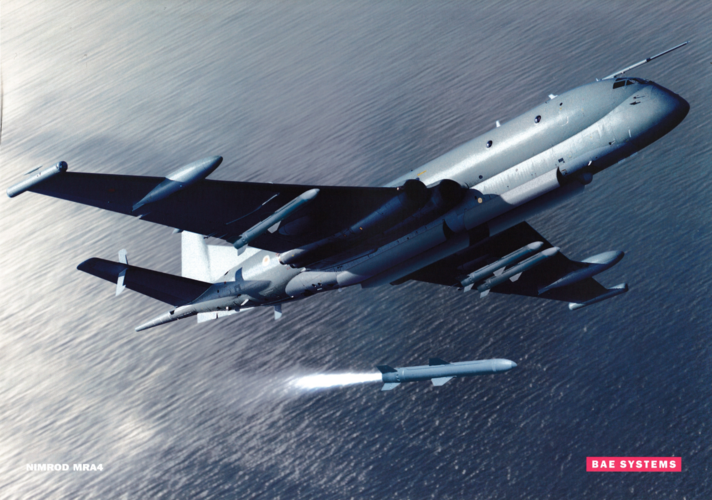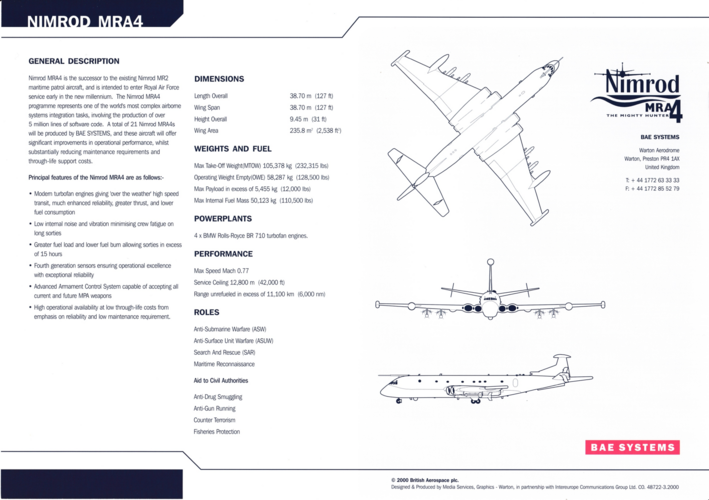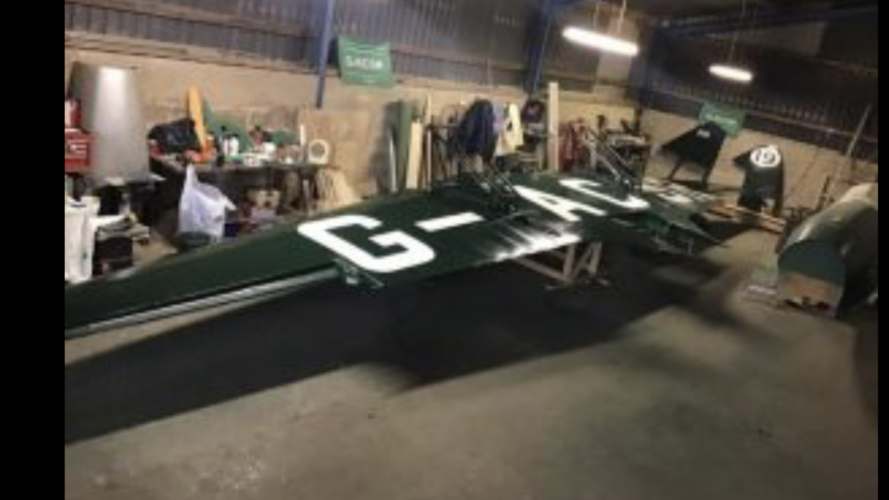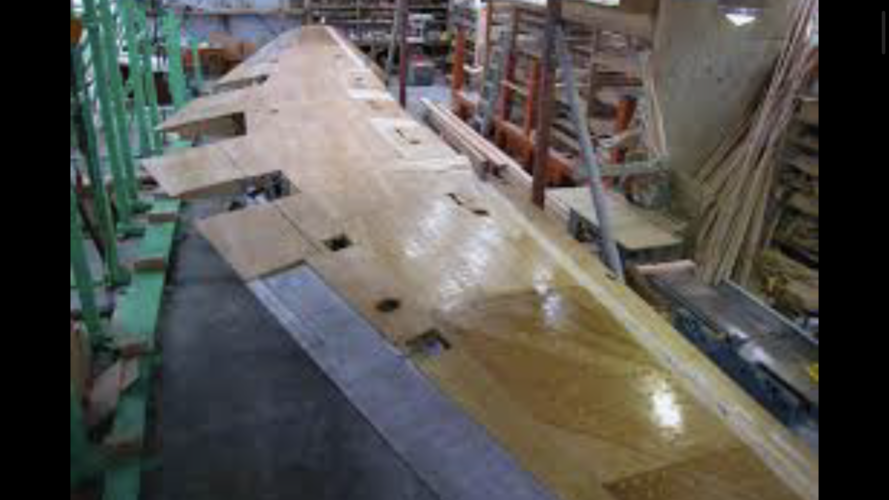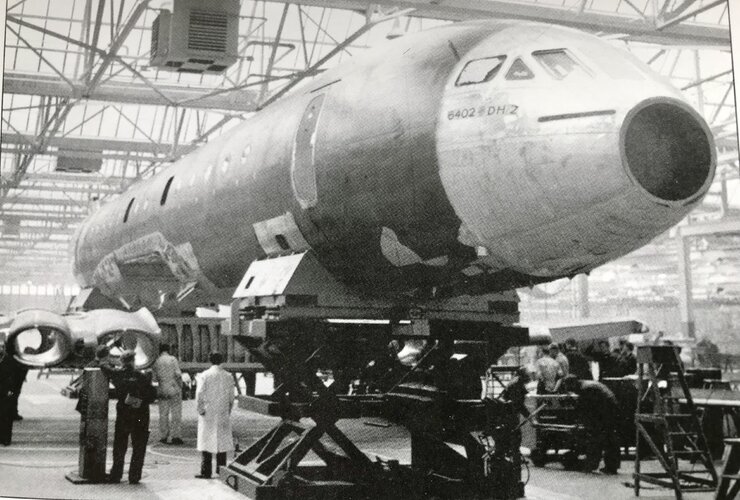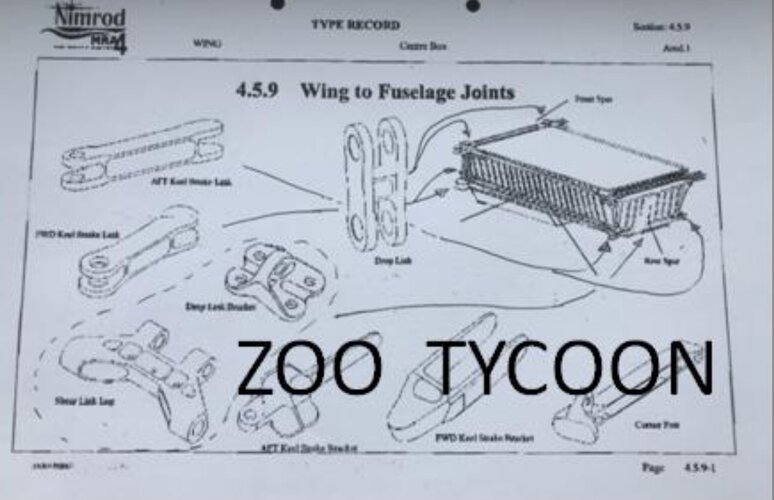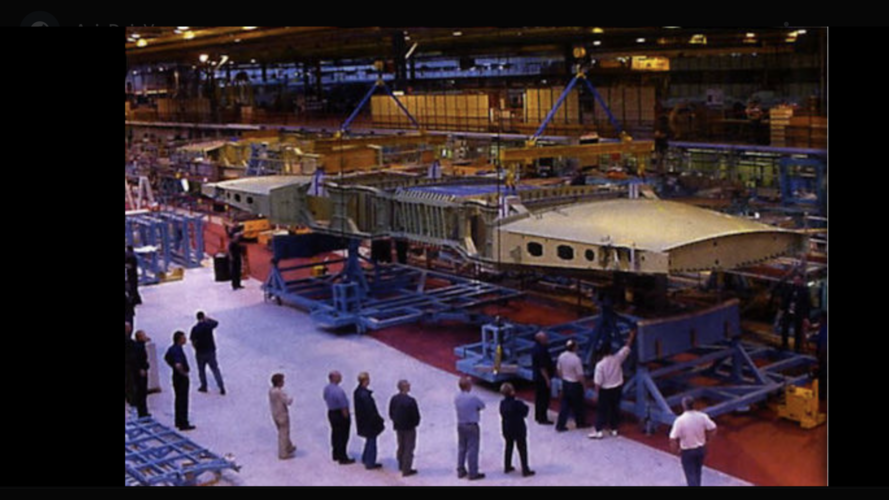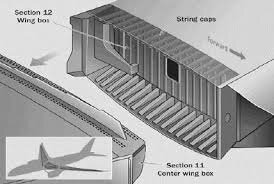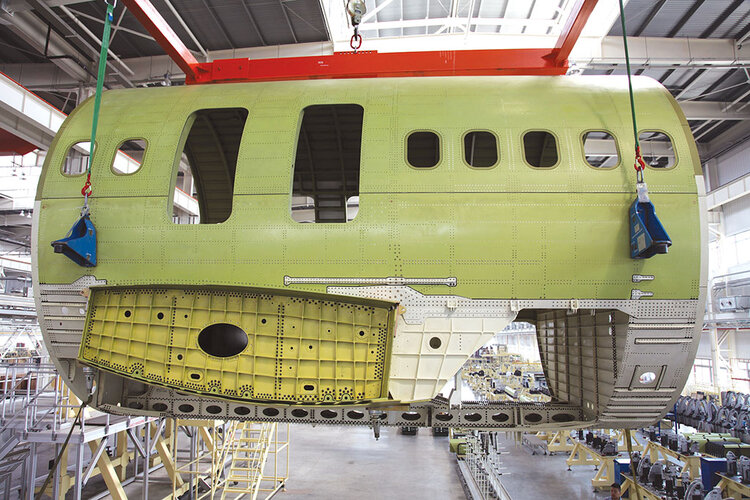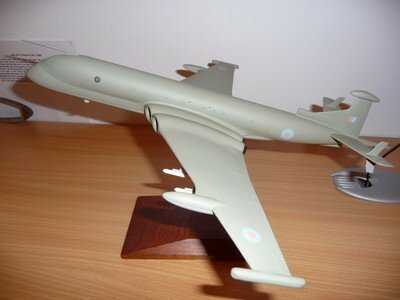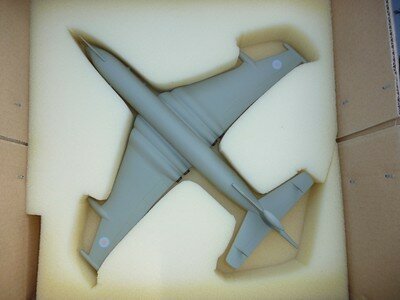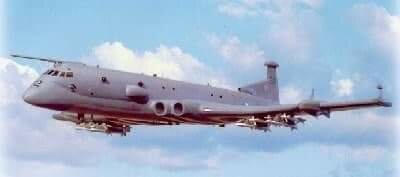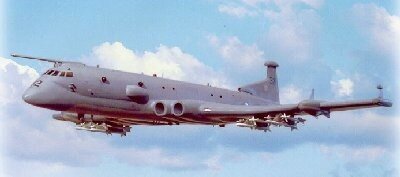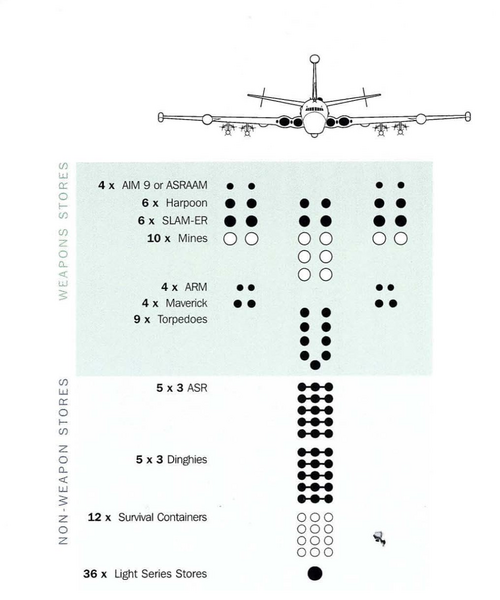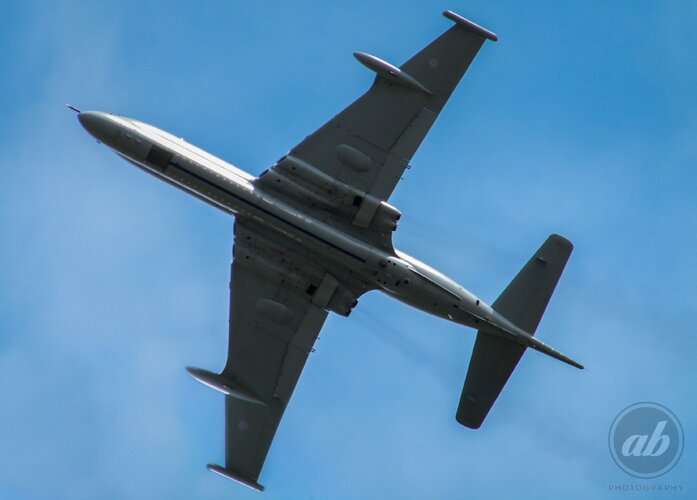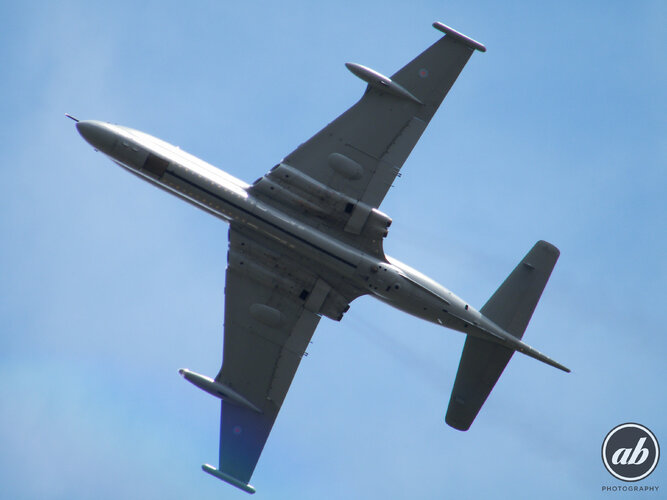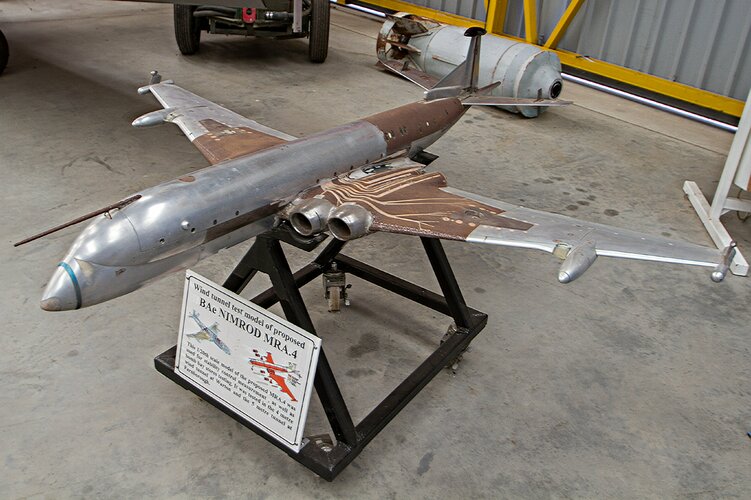it was me....
Nimrod MRA.4 Chief Engineer confirmed in a lecture in 2010 (see below link, page 2 of synopsis).
Harpoon, Maverick, Storm Shadow (seen in real photos), Paveway LGB's (presumably Enhanced Paveway II, perhaps III, with Paveway IV later), Stingray and AMRAAM.
Not mentioned on that list are depth charges and ASRAAM, which I'm pretty sure would have been included (ASRAAM would be a more realistic follow on to the AIM-9P carried by Nimrod MR.2). I suspect Maverick also would have been ditched for Brimstone by the time of service entry as it was only ever an interim capability for the UK, principally on Harrier.
I think the shapes in the image are just representative though....if you zoom in you can see Sidewinder shapes, and Sidewinder definitely wasn't on the to do list....of the other CGI of Nimrod MRA.4 there is a generic AShM 'shape' which appears to be a cross between Exocet and Harpoon.

